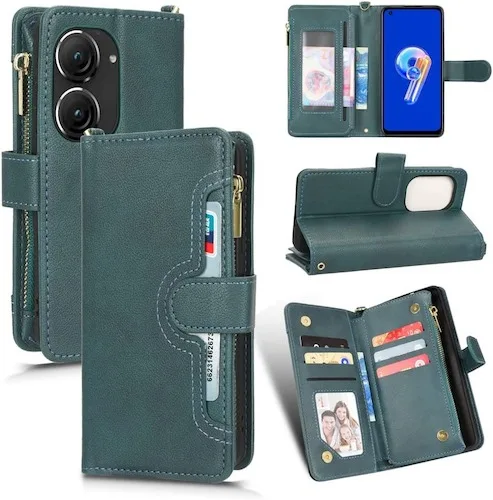ASUS Zenfone 9 review: Pocket rocket
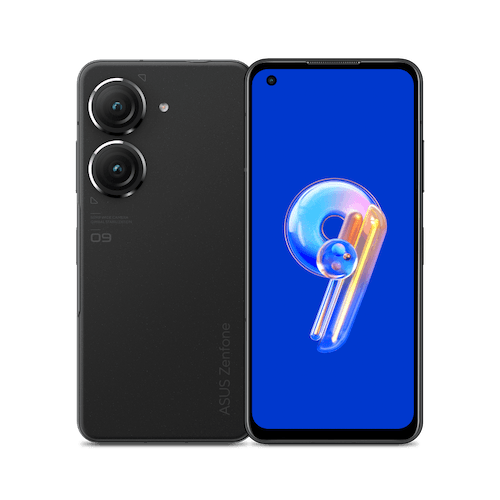
-
- Battery Score
- Camera Score
3
- Design Score
4
- Performance Score
4
- Battery Score
Summary
Quick verdict: If bigger phones leave you exasperated but you crave power, there’s a lot to like about the ASUS Zenfone 9 – with a few limitations along the way too.
- Compact size is easy to hold and use
- Powerful under the hood
- Headphone jack in a premium phone – what madness is this?
- Cameras provide uneven performance
- Small screens are still… small
- No wireless charging is odd for a premium-priced phone
Details
Pricing & Availability
| RRP | $1,199 |
| Launch date | 2022-11 |
We seem to have reached a logical endpoint for how big phones can get and still be desirable to most consumers. The majority of phones you can buy tend to ship with displays between 6.5 and 6.7 inches.
At one time, that would have seemed massive in phone terms. For some phone users, it's still massive, and that's a problem because there aren't all that many "small" phones you can buy. If you want a small phone that's also a powerful phone, you've got only a handful of choices, none of them that compelling. In recent years, your best bet would have been Apple's iPhone 13 Mini, but there you're constantly chasing chargers thanks to its compromised battery life.
Enter the ASUS Zenfone 9, a truly powerful phone in a tiny frame by modern standards.
If you're after power in a small Android device, this is absolutely your best bet – with a few caveats.
Buy ASUS Zenfone 9 products
Design: A 5.9-inch screen feels tiny now – but this is good design
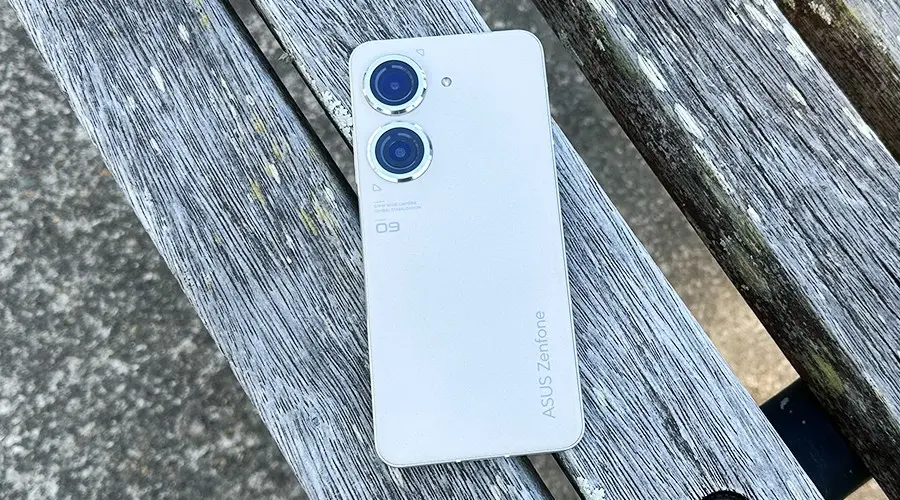
Image: Alex Kidman/Finder
The first thing that will strike you when taking the Zenfone 9 out of its box is just how small it really is. It features a 5.9-inch 2400x1080 pixel 120Hz AMOLED display, which puts it in the truly tiny category for Android phones you can buy right now, especially for premium phones.
To give that some context, the similarly priced iPhone 13 has a 6.1-inch display as does the Samsung Galaxy S22, while Google's Pixel 7 has a 6.3-inch display. Only the Apple iPhone 13 Mini out shrinks it at 5.4 inches.
Bezels are minimal with a hole-punch front camera at the top left breaking up the visuals. The Zenfone 9 has Corning Gorilla Glass Victus at the front, which will protect it to an extent. My review model had clearly been through the hands of some slightly rough review types before me because there were a few evident scratches getting it out of the box. A new unit shouldn't have those problems of course, but investing in a simple screen protector and case would still be a wise investment for a phone at this price point.
ASUS sells the Zenfone 9 in Midnight Black, Sunset Red, Starry Blue and Moonlight White, which was the unit provided for review. ASUS has done something interesting with the rear coloured back. It's plastic, but it has a soft, almost suede-like finish, which is pleasant to the touch. Although again, it's not immune from small scuff damage, which does make me wonder about what it will look like a few years down the track.
You also won't be able to ignore the 2 rear camera lenses. ASUS clearly wants to focus your attention here because it's placed them within 2 massive and distinct lens bumps. Nobody's not going to notice when those are pointed at them.
In terms of controls, down the right-hand side, you'll find a standard volume rocket and at the base a USB-C port for recharging. What's genuinely surprising about the Zenfone 9 is that the top of the phone houses a 3.5mm headphone jack. These aren't entirely dead in modern smartphone design, but they're rare as hen's teeth in the premium space. It's a really nice welcome inclusion, even if your preference leans more towards Bluetooth headphones.
Camera: Big lenses don't equal big performance
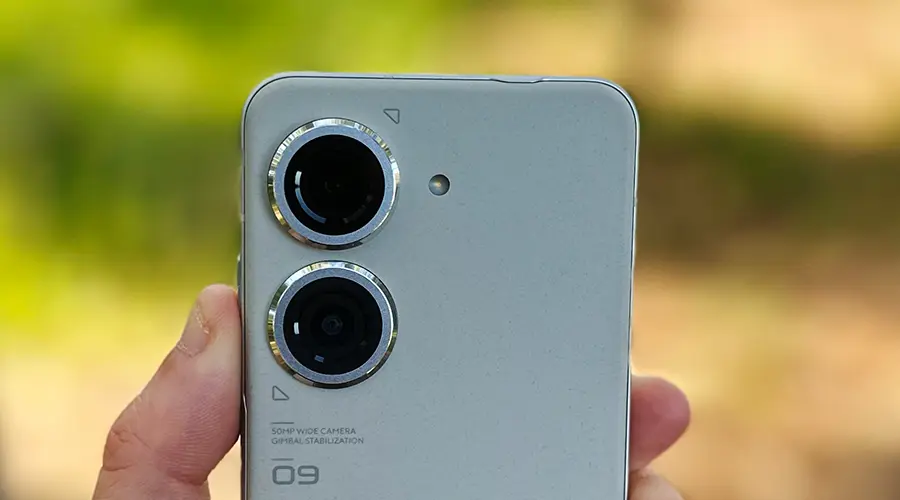
Image: Alex Kidman/Finder
ASUS has copied a prevailing trend in lower-end premium smartphones with the ASUS Zenfone 9. Specifically, the top end of town all tend to use wide, ultra-wide and telephoto lenses. If you can't meet their asking prices, you've got to accept just wide and ultra-wide options. In the case of the Zenfone 9, that's a primary 50MP wide, a 12MP ultra-wide and a front-facing 12MP sensor. ASUS doesn't quite stop there in terms of camera tweaks, most notably adding a 6-axis gimbal stabiliser to the mix for that primary wide lens.
There's definitely something to be said for shooting with smaller phones in terms of convenience in your hand if you're not using a tripod. It's why I prefer, for example, the iPhone 14 Pro to the iPhone 14 Pro Max for shooting, even though both have the same camera capabilities. Here, the ASUS Zenfone 9 worked well because it's very easy to pull it out of a pocket, frame your shot and snap it.
At least, that's the theory. Actually using the Zenfone 9 as a camera phone rather quickly revealed its shortcomings relative to what you could get at around the same price. I hit intermittent issues with focus, where the ASUS Zenfone 9 took longer than I'd expect to grab a shot, leading to missed opportunities or blurry photos. Low-light performance was fair, but again I was struck by the fact that I could get better out of an iPhone 13 or Pixel 7 for around the same money.
I also hit one weird quirk where the ASUS Zenfone 9 unlocked itself in my pocket and decided to take a bunch of happy snaps of the inside of my jeans. I never knew I wanted fifty dark, blurry, slightly blue shots, but I do now have them. That's an easily deleted mistake, at least.
Lacking telephoto zoom, the ASUS Zenfone 9 relies instead on purely digital zoom. Here I had some hopes that the stabilising gimbal might make a difference, especially as ASUS limits digital zoom to just 8x. Sadly, this wasn't the case. As an example, here's a shot of a nearby landmark fountain, first taken with the ultra-wide 12MP lens:

Image: Alex Kidman/Finder
And then with the standard 50MP wide lens:

Image: Alex Kidman/Finder
Both are fine shots, even if the fountain is an ugly piece of work. That's not my fault. So what happens when you push that out to 8x? This happens:

Image: Alex Kidman/Finder
The gimbal does appear to help with video stabilisation, but again, I can't help but compare it to what the likes of Apple and Google specifically do with AI-led stabilisation. The ASUS Zenfone 9 is as good as they are, but that's as far as it stretches.
None of this means that the ASUS Zenfone 9 has a bad camera system. It's just that it doesn't shoot as well as you could get for the same money from competing brands, and in some cases, a little worse. It's easily the worst part of the ASUS Zenfone 9's value equation, which is disappointing when the rest of the phone is really very good.
ASUS Zenfone 9 Sample Photos

Image: Alex Kidman/Finder

Image: Alex Kidman/Finder

Image: Alex Kidman/Finder

Image: Alex Kidman/Finder

Image: Alex Kidman/Finder

Image: Alex Kidman/Finder

Image: Alex Kidman/Finder
Performance: Plenty of grunt
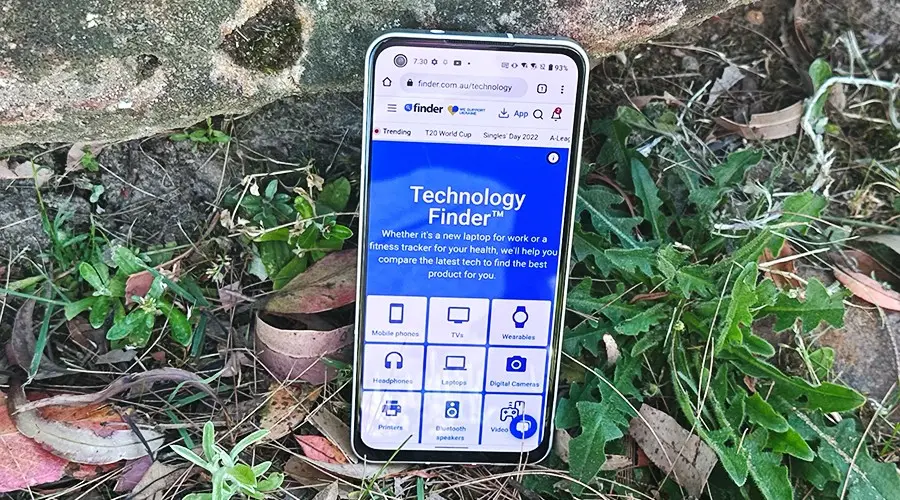
Image: Alex Kidman/Finder
Under the ASUS Zenfone 9's display lurks a Qualcomm Snapdragon 8+ Gen 1 processor, 16GB RAM and 256GB of storage. That's a very solid recipe for any premium phone right now, and right up there for smaller Android phones, too.
So what does that mean for overall performance? It means that the ASUS Zenfone 9 is fast. Very fast, in fact. If you compare it against phones at or around its $1,199 asking price at the time of writing, here's how it compares at a CPU level:
Apple's own silicon still outdoes anything Android can offer, but the Zenfone 9 comes very close and presents more than enough processing power even for demanding users.
It's not specifically posed as a gaming phone – ASUS has its own line of ROG phones for that – but it's also very impressive at the GPU level, with its Adreno 730 GPU outpacing the competition nicely in 3DMark Wild Life's tests:
The Zenfone 9 isn't the first phone to max out 3DMark's basic Wild Life test like this, but it's by far the most affordable to do so. What this all boils down to is a small phone with a lot of power to play with, whether your passion is gaming apps, higher end Android apps or even limited multi-tasking – though clearly the smaller display on the Zenfone 9 might limit more of what you could do there before you started to really stretch its performance prowess to any considerable degree.
The Zenfone 9 is an Android 12 phone with a promise of 2 years of OS upgrades that should see it through to Android 14 at the least. That's not superb for a phone at this price point. At the time of writing, it was running the October 2022 security updates, which means ASUS is at least doing a reasonable job with regular update schedules.
Battery: Small body doesn't have to mean low battery life
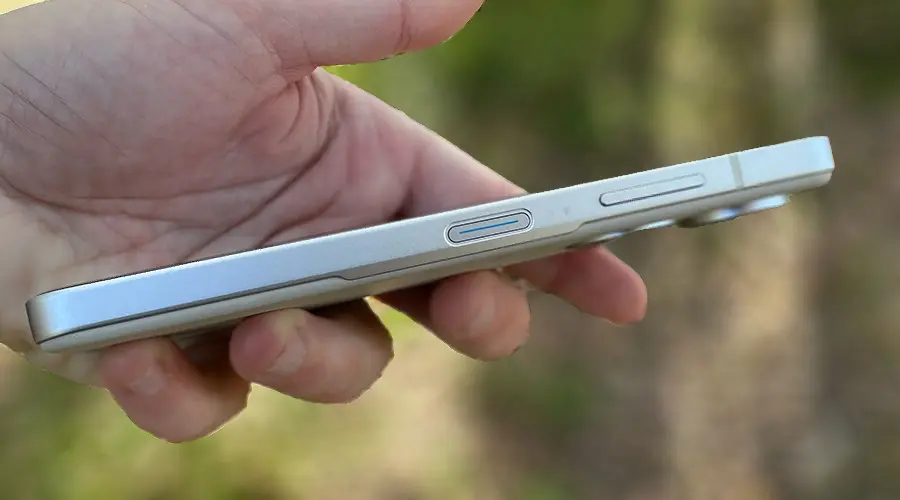
Image: Alex Kidman/Finder
There's a general expectation for smaller phones when it comes to battery life. Having a smaller phone body means that you can logically only pack in smaller batteries. Combine that with a high-power CPU and GPU, and you're typically talking a recipe for poor battery life. That's absolutely the case for the iPhone 13 Mini, for example.
The smaller size of the ASUS Zenfone 9 does constrain its battery capacity to 4,300mAh, not exactly massive. As such, my expectations for its battery endurance were not high.
It very much surprised me, both in Finder's direct battery test and in its day-to-day performance. Here's how it compared against similarly priced phones:
That result surprised me, and the ASUS Zenfone 9 continued to impress through my review time with it, easily lasting a day's work in most circumstances. ASUS has clearly done the hard yards when it comes to optimising battery performance because this was not what I expected.
What I did expect from a premium phone in this price category was both wired and wireless charging. Sadly, you only get the former, with support for up to 30W USB-C charging. At the above $1,000 price point, Qi charging should really be expected. Maybe that's the price you pay for that interesting suede-type finish on the back of the phone?
Should you buy the ASUS Zenfone 9?
- Buy it if you want a small powerful phone with great battery life.
- Don't buy it if you want a small phone with great cameras.
The ASUS Zenfone 9 fills a niche for phone users who don't want big phones very nicely indeed. It's extremely powerful, both in processor terms and battery life terms, and the overall design is really nice. The 120Hz display is easy to make out, and the size makes it just about ideal to slip into a pocket or purse without concern.
Lacking wireless charging is a minor annoyance, though. The biggest concern I have with it is the camera quality, which isn't quite up there with what you could get at this price. It's not bad, but it sure could be better. If it was, this would be a top 3 phone for 2022 without a doubt. As it is, if you're after a smaller phone in the Android space you're not awash with choices, and the Zenfone 9 is your best one as long as you don't need fine photo control.
Pricing and availability
The ASUS Zenfone 9 sells in Australia with pricing from $1,199
Specifications
Display
Camera
Physical Dimensions
Connectivity
Power, storage and battery
Device features
How we tested
I tested the ASUS Zenfone 9 over a 2-week period, extensively testing its features and functions across a range of benchmarks and day-to-day testing. The Zenfone 9 was also camera tested in a variety of situations and compared against similar phones I've tested in the past available at the same price point at the time of writing this review. The model tested was loaned to me by ASUS for the purposes of review.
As a product reviewer, I've got more than 20 years of experience covering the consumer tech space including all Apple products released in that time frame. I'm a multi-time Australian IT Journo award winner, including winner of the 2022 Best Reviewer award.
Alex Finder
Senior editor
You are about to post a question on finder.com.au:
- Do not enter personal information (eg. surname, phone number, bank details) as your question will be made public
- finder.com.au is a financial comparison and information service, not a bank or product provider
- We cannot provide you with personal advice or recommendations
- Your answer might already be waiting – check previous questions below to see if yours has already been asked
Finder only provides general advice and factual information, so consider your own circumstances, or seek advice before you decide to act on our content. By submitting a question, you're accepting our Terms Of Service and Finder Group Privacy & Cookies Policy.
This site is protected by reCAPTCHA and the Privacy Policy and Terms of Service apply.



